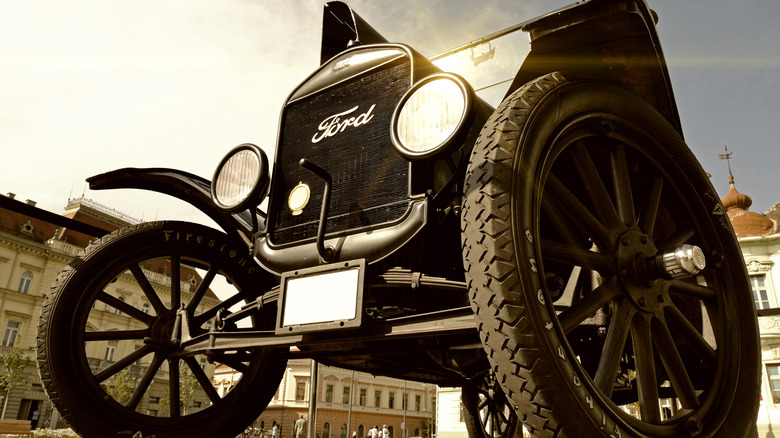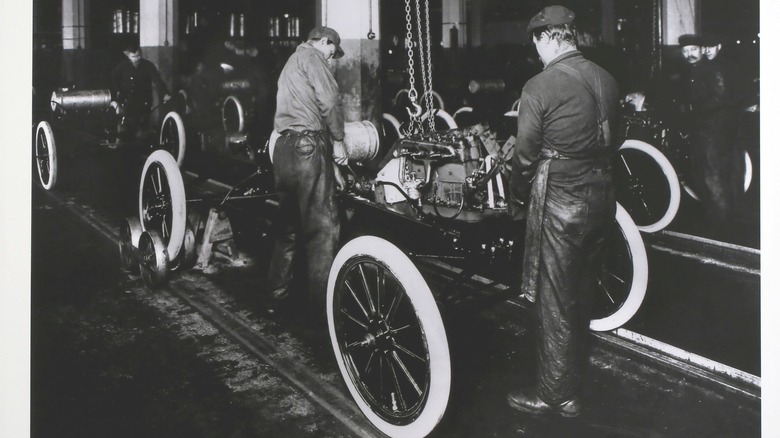Here's What Made The Ford Model T Engine So Special
The Ford Model T is the definition of an automotive icon. Arguably the most important car ever made in America, the Model T motorized the country for the first time, establishing how cars would be made, sold, and driven throughout the 20th century. Manufactured from 1908 to 1927, at one time half the registered cars in the world were Model Ts. How it achieved that legendary status is equal parts history, happenstance, marketing, and design, but perhaps the keystone of the vehicle's success was its engine.
Like many brilliant products, the Model T didn't succeed through pure innovation. It took inspiration from multiple prior innovators, then united their best ideas in a single versatile design. The Model T, and, above all, its engine, became America's favorite car because it learned from its predecessors, avoiding their errors and capitalizing on their strengths to deliver the efficient – and very well-marketed – product that would get America rolling.
Simple excellence
Even well-informed gearheads are often surprised to learn that engine and fuel debates are not a modern concept. From 1885, when Karl Benz first took a single-cylinder, three-wheeled oddity called the Patent Motorwagen to the streets of Mannheim, to 1927 and the end of the Model T's model run, American companies built successful cars that ran on steam and even electricity. Different fuels drove different designs and customer expectations. So long as that was the case, standardizing engine design across the industry would be a pipe dream.
For better and worse, the T-4 changed that expectation, committing the United States to the cylinder-based, gasoline-driven internal combustion paradigm. The 4-cylinder, 4-stroke, water-cooled plant put out a high-for-its-time 22 hp, but more importantly, it set America's expectation of what a car engine would be. Electric and particularly steam propulsion were chancy and often dangerous, requiring constant maintenance. By comparison, the T-4 was simple, serviceable, and given robust support by Ford. In particular, Ford produced high-quality interchangeable parts and built the engine to use them, including the first removable cylinder heads and a cast crankcase.
In short, while the T-4 lagged behind modern designs and even contemporaries like Duesenberg and Studebaker in terms of performance, it did something no American design had done before: gave customers an engine they didn't have to worry about. The T-4, and the Model T it powered to immortality, represented an approach to car design aimed, not at rich niche customers seeking spectacle, but ordinary consumers who needed a reliable tool for daily use.

